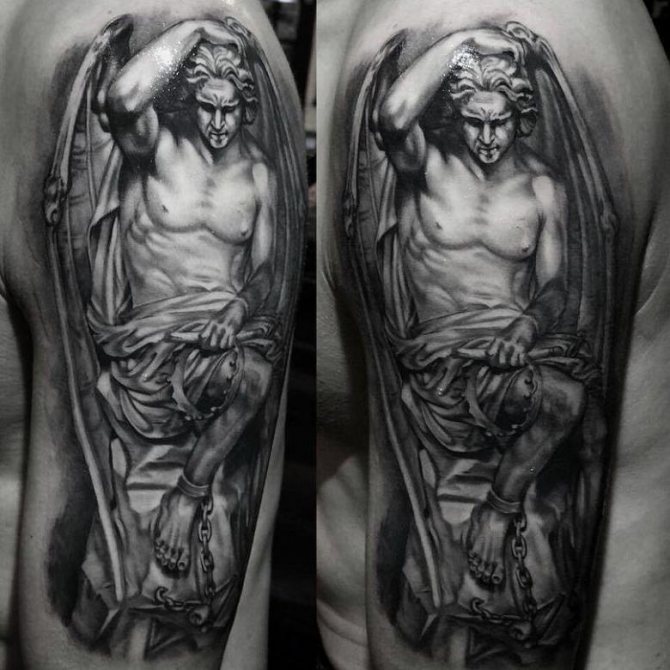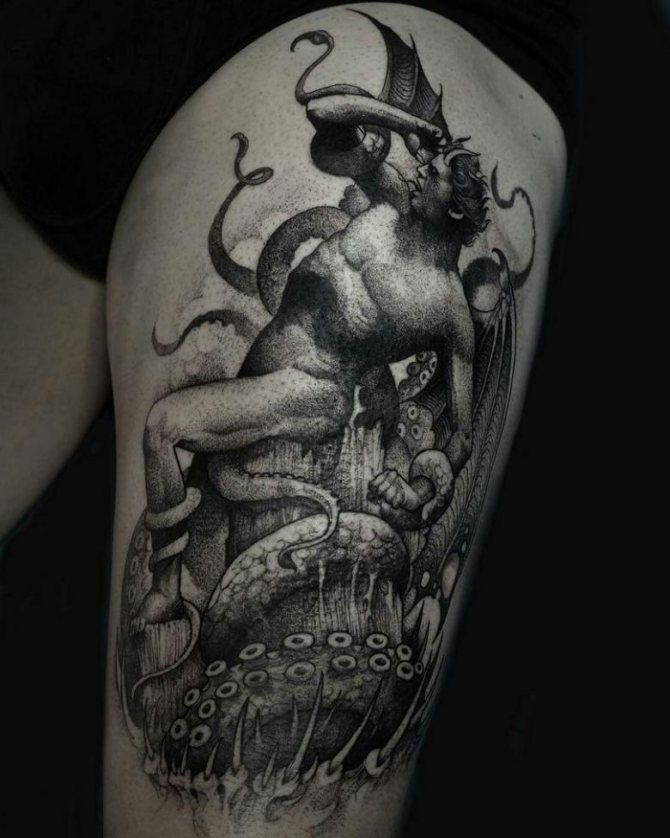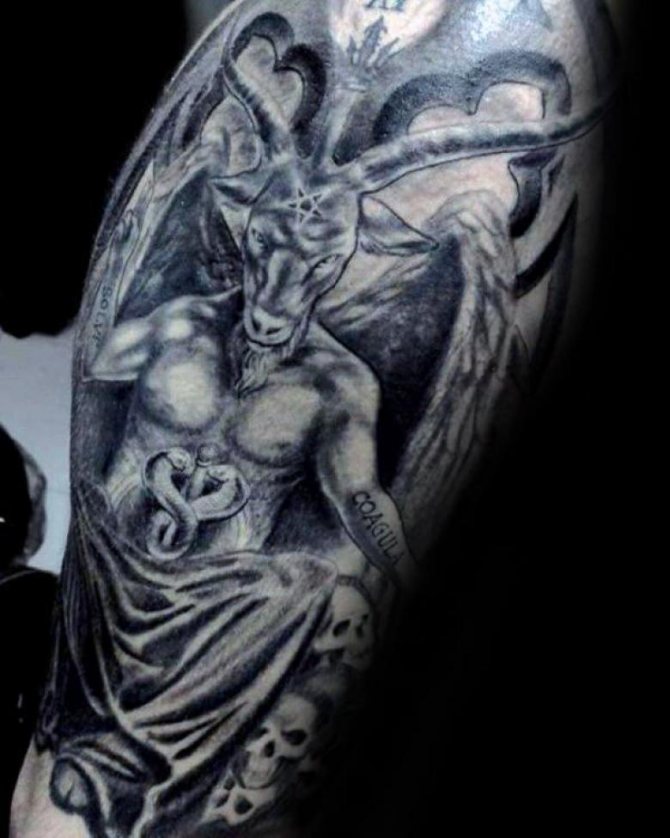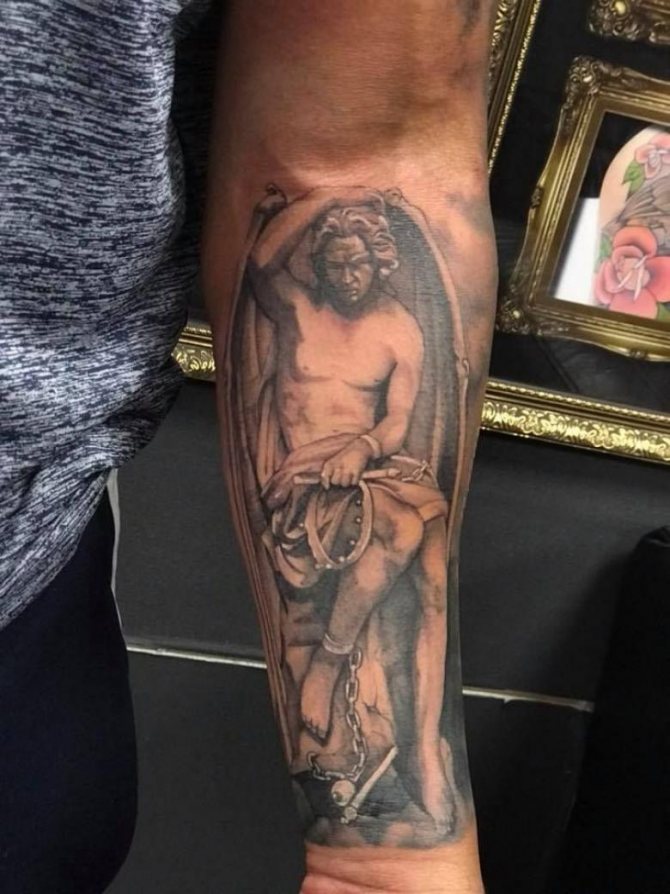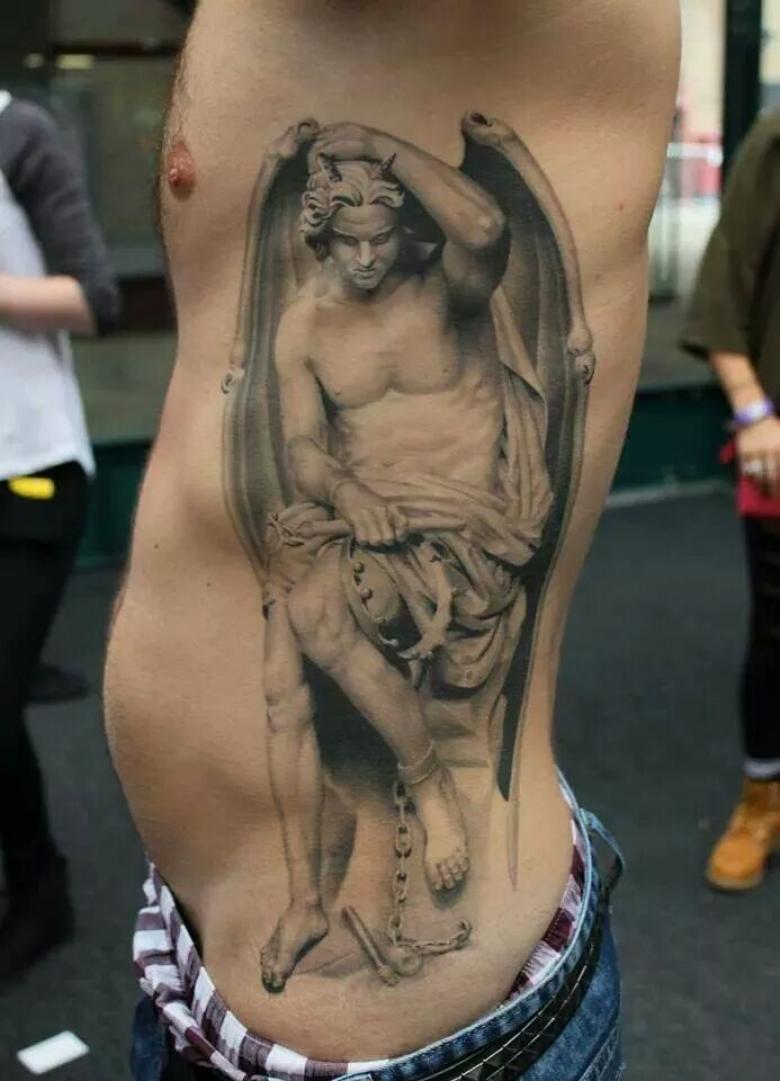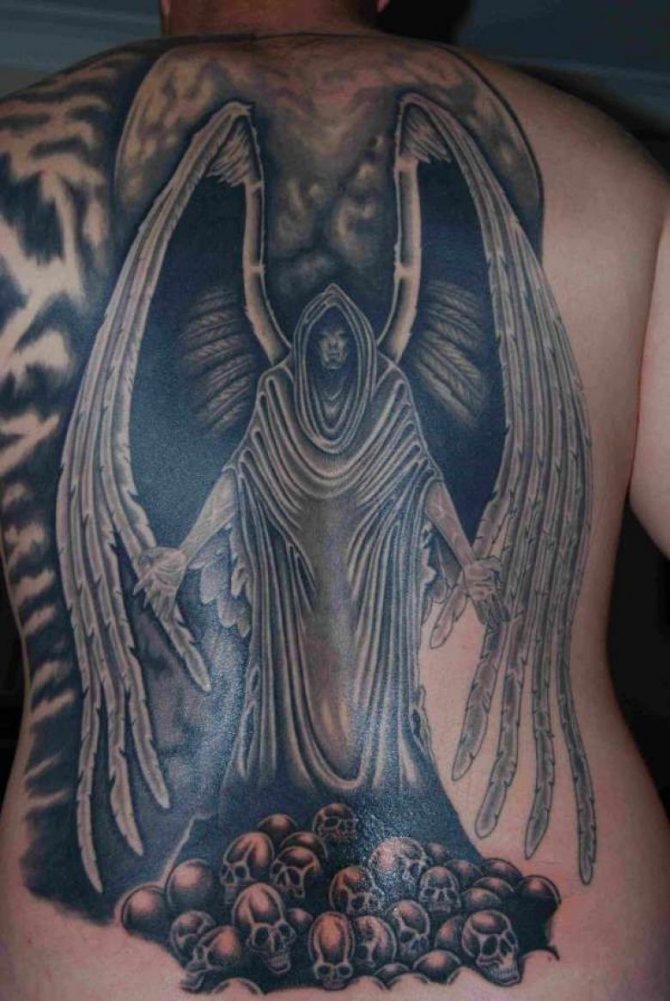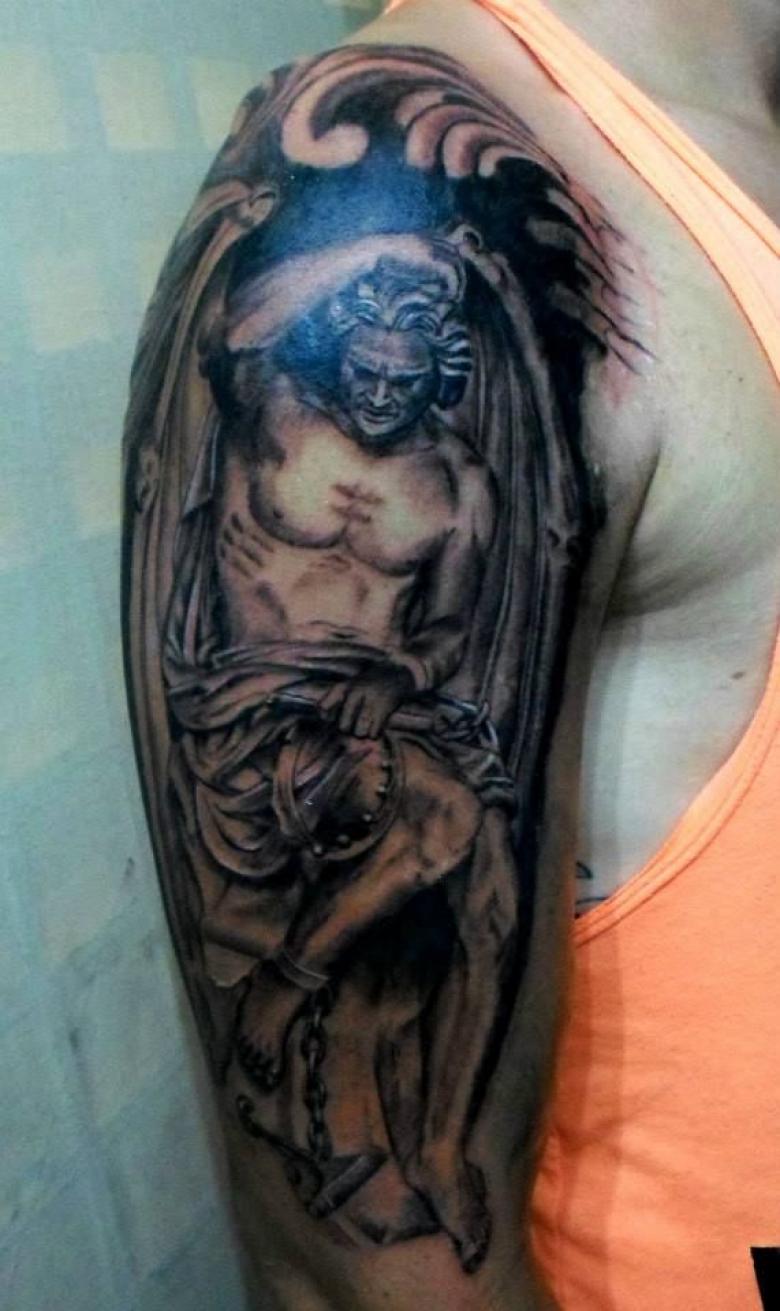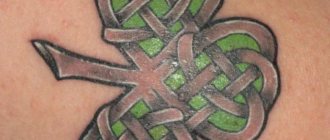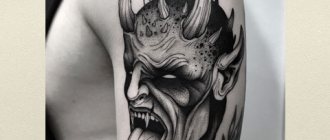Any theory is based on definitions, terms, concepts. Materially expressed in the form of images of its inherent signs and symbols.
Could not ignore such an attractive topic as attributes, ancient and modern Satanism. The most ardent opponent of Christianity, looking for any excuse to manifest power, force, power.
The markings of the Devil are cunning, mysterious, seductive in their mystical mystery. They allure, enchant, promise to endow the uninitiated with unearthly power, opening doors to special knowledge. Sometimes, it works. To become knowledgeable in this matter, it is necessary to get to know them better.
Lucifer's Sigil
Lucifer's Sigil
A sigil is a set of geometric signs with magical energy. The most common of them is the pentagram, to the explanation of which we will return.
One of the oldest and most influential symbols of Satan is the Sigil of Lucifer, which is also his seal. The first evidence of the appearance of this mark dates back to the beginning of our era. Subsequent written references are found in the early Middle Ages.
It is not possible to trace precisely the whole casuistry of the creation of such a sign as the seal of Lucifer. According to specialists in the field of heraldry, it reflected the symbolism of Mediterranean city-states. It is also possible that a later interference in the structure of the image of the masters of the past, in order to give it more significance and mystery.
Until the 19th century, Lucifer's Sigil was not very popular. With the emergence of various kinds of "secret societies", the development of fashionable directions of occultism, the creation of semi-closed orders, the sign of the Prince of this world becomes widespread and popular. It begins to be used as an amulet or ornament. Applying for the manufacture of a cult symbol: the noble metals, inlaid with precious stones.
The sign of Lucifer is very cunning and symbolic, which in itself reflects the diabolical essence of the attribute. We find in it a series of triangles, rhombuses, hooks, intertwined in a peculiar combination. Which is evidence of:
- Duality, that is, the union of male and female. Manifesting itself in obtaining demonic power. Over the minds and souls of fallen people. But at the same time losing their own will. Falling into dependence on the forces of evil.
- Unity of body and spirit as a means of access to otherworldly powers and secret knowledge.
- The tricks of trapping human souls, to imprison them in a labyrinth of imagined hopelessness.
Magicians and mystics have used Lucifer's Sigil as a seal-pecking spell, binding contractual obligations forever, or closing off access to anything to outsiders. With its power, attempts were made to find the key to unlock the unknown realms of arcane knowledge.
Anyone wishing to wear an original amulet should think carefully before wearing such a sign of Lucifer.
On what part of the body to do?
The tattoo, which depicts the image of Lucifer, can be placed anywhere. When choosing, it is necessary to rely only on your preferences and the scale of the tattoo itself.
Most often, such drawings are very volumetric in terms of composition, and therefore they are placed on the back, chest, shoulder or forearm. This is especially characteristic for men's tattoos.
Small drawings, which occur somewhat less frequently and mostly in women, look most harmoniously on the wrist, in the area of the ribs, on the shoulder blade or thigh.
Baphomet's pentagram or Lucifer's star?
One of the demons of the heavenly host is called Baphomet. He is an androgynous creature with a goat head, a pair of wings and bifurcated hooves. Without any doubt: his image, enclosed in an inverted five-pointed star - the so-called pentagram of Baphomet, is a symbol of devil-worship. But it is dedicated to an idol, not Satan.
The Devil has his own true mark - the star of Lucifer. The sign of Venus, the morning star. Symbol of Dennika - angel, carrying the first rays of light, but fallen from the Lord, inverted (as the star in the image) in its heavenly essence. The second, in importance, is an attribute of unclean forces. The number of the Beast and the Serpent of the Church of Satan is the number of the Serpent, which gives its possessor inhuman strength with which to defeat the enemy and carry out his plans.
The Number of the Beast, the Lightning, the Serpent of the Church of Satan
Five-pointed star and Lucifer's sigil are two active artifacts that are fully used in rituals, dark practices, and rituals. These are direct tools for communicating with the forces of darkness and Satan himself. In addition to them, there are so-called marks of the Devil, denoting more of his presence.
What these include:
- The number of the Beast - three sixes in a row. The true meaning of this number goes far into numerology, but it has never been revealed. It is believed that it numerologically encodes the name of the Devil on Earth in human form.
- The lightning is a simple image of a zigzag. The fact that Satan takes the form of a lightning bolt is mentioned by Luke in his Gospel, 10:18. It was in this form that the apostle saw the Fallen One rapidly departing from heaven. Stylized as the letter S sign of lightning can be seen on the tunics of the German SS and in the paraphernalia of Satanists.
- The symbol of the Church of Satan - the only open Church of Satan is in San Francisco and uses as its symbol a double cross, standing on a serpentine infinity. This attribute has no magical power either, but is often used as a Satanic tattoo to identify "their own."
Speaking of the symbolism of Satan, it is impossible not to mention the famous pentacle with the image of the head of the Goat inscribed in an inverted star. For many, it is the most striking image of Satan. However, in fact, the pentacle is a personal artifact of the demon Baphomet, the right hand of Lucifer. And though it bears a very powerful dark force, it is not the seal of the Fallen One himself.
The All-Seeing Eye or Lucifer's Eye
Lucifer's symbols are not limited to two signs. His essence is infinitely sophisticated and diverse. What Devil can do without a great number of tricks and stratagems? With their help, the Imp takes possession of unfortunate souls, condemning them to hellish torment.
The image of Dennika stands at the very top of the throne of heaven, being the deputy of God. The Almighty endowed him with the All-seeing Eye, to judge what is happening, punishing the guilty.
But the angel fell. Now Lucifer's Eye looks out for the next victims, detecting every sinful act of man. The official Church does not agree with this, though.
The history of the symbol

Fallen angels, or as they are also called dark angels, are rebellious angels. They went against the will of God, were expelled from Heaven after the first fallen angel Lucifer. Everyone knows the identity of Lucifer, but not everyone knows how it happened that God's favorite angel was a fallen angel.


Lucifer, or as he was called in Heaven, the angel Dennitza, was the brightest, kindest, strongest, and closest angel of the Creator. But his pride and self-confidence that he was the most powerful ruined him, and when he spoke out against God, God banished him from Heaven and sent him to Hell. After that, Lucifer was already so angry with God that he decided to create his own army and began to lure his other brethren to his side.
But not everyone had the same motives as Lucifer. Some of the fallen angels paid the price for wanting to pursue their plans without limits and do whatever they wanted, even if it was to help people. Others were endowed with great destructive power, and when the opportunity was there, they simply seized the moment to continue their work.
The Inverted Cross
As Christianity began to spread, there was an aversion to it on the part of much of the Romans. They expressed their negative attitude, their contempt, with the image of the upside-down cross. It came down to the creation of the sickle-shaped cross of anarchy and disorder. As a symbol-antipode to the sacred. The "shifter" has no special sacred meaning, even though it carries a strong charge of negative energy.
Some of today's negatively minded young people are happy to decorate their appearance with such a symbol. As if showing a special outlook. Not bothering with deep analysis, but rather guided by the trends of fashionable originality.
Signs of demon possession - emotional state and personal life
Signs of possession sooner or later manifest themselves in the emotional state of the person. However, in order to be sure that it is them and not the symptoms of a serious mental disorder, it is better to be examined by a specialist before you consider yourself a victim of an unclean force. However, many people believe that schizophrenia and demonic possession are the same thing.
Signs are frequent and unreasonable negative emotions. Often they are associated with a desire to commit suicide. At the same time the person cannot explain what the matter is and what such desires are connected with, however they are present. Many people manage to resist the evil one, but suicide attempts hint that he is really trying to take over your soul.
Depression can be a constant companion of the victim of evil forces. It is present with any negativity, even jinx or spoilage. A feeling of weariness from life during an attack of evil spirits is not due to any events, it appears for no apparent reason. Unreasonable fear and anxiety, nightmares and hallucinations can also be observed.
Relationships with others almost always suffer when dark forces interfere in a person's life. The demon is clever, and he understands that people close to him can notice the changes that have happened to him, and suspect wrong. Therefore, his victim is always resentful of relatives, friends, and colleagues. She is often angry and envious, and far from "white" envy. This can push a person to the most unpredictable actions.
When communicating with people with whom the victim of darkness disagrees, she displays anger and irritability. Even if in the past this person was tolerant and able to appreciate and respect other people's opinions, after the possession of a demon or demon these qualities have disappeared. The possessed person does not like those who argue with him. Irritability is a consequence of the loss of life energy that the demon consumes.
The hatred of those around him may be subconscious, expressed only in irritability and spoiled relationships. However, the demon's goal may be to create a new maniac, and then he pushes the victim to commit crimes. Anger, aggression, a tendency to tantrums, loss of self-control - this should be alarming.
It is not uncommon for the demon-possessed to smash everything in a row during attacks, often Christian symbolism suffers - in this way the demon gets rid of anything that threatens his safety. The tendency to violence may manifest itself in a change of preference. For example, the possessed person starts to enjoy movies with violent scenes. Later, he may begin to experience a desire to inflict suffering and pain on someone in real life.
The speech of the demon-possessed person changes - he begins to use swear words more often, his voice may change. He may become addicted to drink, drugs, or gambling. In family life, such a person often becomes unbearable - adultery, quarrels, drinking, unwillingness to support a family and have children. Demons never tell the truth, so the demoniac often lies and takes pleasure in it.
Coin
Modern Society is heavily influenced by media information. Playful attitudes toward the forces of Evil are becoming the norm. Biblical images and plots are played out in many variations. Satanists constantly prepare additional "food" for adherents of dark forces.
The appearance of the movie "Lucifer" is associated with the emergence of the demonic coin of the same name. Serving as a peculiar, the only possible payment for the exit from hell on earth. On one side of the coin there is an inscription of faith in God. On the other half is a phrase-damnation from him.
So far, it's just an original trinket for fans of the series. But who can know: where it will wind up in the future, what value the attribute will have in people's lives? Already there are coins bearing the name of the Prince of Darkness. Denoting only beautiful epithets (bearing light) of ancient lords and heroes.
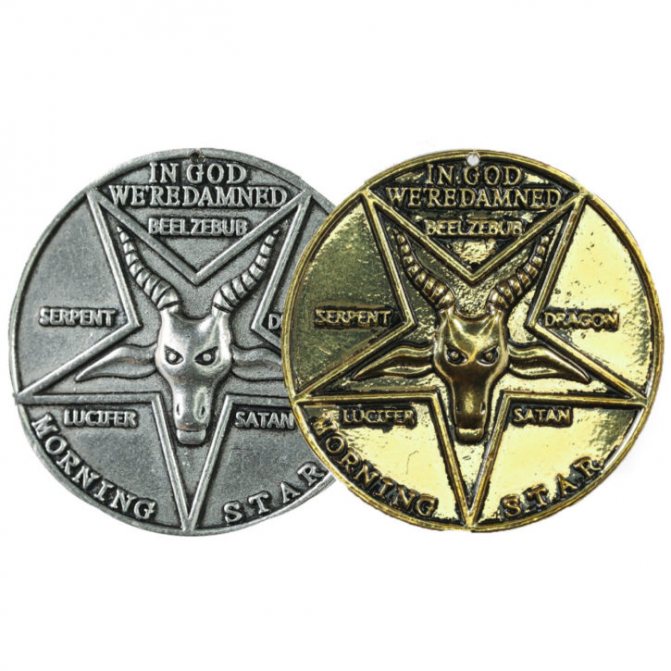

From a sewing needle to an electric razor
Wax drawings using dyes injected under the skin appeared in Europe in the early thirteenth century. The tattoos were used in the circus arts for the same purpose. Then tattoos migrated to the circus arts for the same purpose. The unusual artistry was so successful that after a few decades it was accepted as a normal phenomenon. Enterprising Parisians were the first to open tattoo shops. Masters themselves made the dye, which was injected under the skin of the client for a modest fee.
It is assumed that the birthplace of tattooing is Haiti, where tribes marked with natal symbols of adulthood, anniversaries, puberty. The seafarer Cook imported the ritual attraction. The word "tattoo" comes from the Polynesian "tattoo" ("drawing"). Worn symbolism was used by the criminal world as a means of communication and a carrier of information. The tattoo became a kind of business card of the criminal, which is difficult to spoil and even more difficult to lose. The tattoos were used to divide the world into "insiders" and "outsiders," into thieves and thieves. The symbols were used to record criminal records, the number of convictions, time served or sentences imposed, the thieves' color, attitudes toward administrative fines, proclivities, character, nationality, religion, sexual orientation, place in the criminal hierarchy, and even erudition.
In the past century, the criminal police of European countries, including Russia, began to study the nail symbolism of criminals, to form catalogs of tattoos and analyze them. But at that time tattoos were perceived only as external signs. At the beginning of the XIX century, a Paris criminal detective, E. Wheelock, offered a system of criminal identification based on special signs. A card index on Parisian criminals was created with names, biographies, nicknames, addresses, criminal connections and external features. At the same time, a forensic artist appeared in Surtee (criminal security service), who sketched the faces of criminals. Over twenty years of service, Vidocq and his subordinates managed to accumulate more than four million cards. It is noteworthy that Eugène Wheelock himself was a criminal in the past.
A new turn in the development of identification took place in the middle of the last century, when the Brussels prison for the first time began to take pictures of convicted criminals and enter them into the card index. The real revolution in forensics was led by Alphonse Berthillon. He proposed to measure the persons under investigation (there were eleven different measurements), to take fingerprints, and to introduce a "verbal portrait.
Ч. Lombroso, who worked as a doctor in an Italian prison and created psychological portraits of prisoners, was one of the first to note the autobiographical nature of tattooing. The Italian criminologist's observations were included in his famous album of criminal types. Lombroso believed that one could judge the identity of the wearer by their body patterns (as well as by all human acts).
The interpretation of tattoos became a common tool for the police in the fight against crime. But the instant payoff was not and could not be. The study of body art took decades, and the new trend gradually cooled. It was relegated to the realm of cabinet theories. The police kept a record of tattoos, treating them as everyday signs of a criminal. The catalog was used when it was necessary to establish the identity of a deceased, to identify or recognize a criminal, to declare a person wanted, etc.
Beginning in the 30s in the Soviet Union the situation changed somewhat. Tattoos were forced to be studied because they became a kind of tool of the criminal world.
In no other country in the world were convicts as blue-purple as in ours (only Japanese yakuza or Chinese triad warriors could compete with them). The roots of this phenomenon lie in the same place as the roots of the entire prison-camp subculture. Just five or six years ago, criminalists from America, Germany and France were skeptical of tattoo catalogs and condescendingly refused information assistance on the issue.
Today, the CIS has successfully exported crime to Western Europe and the United States. In the criminal police structures of many countries "Russian departments" have been created to fight against the "fourth wave". In Russian neighborhoods came the time of shootings, and police officers increasingly came across corpses with distinctive body art or an extortionist painted from head to toe, who had undergone "camp universities" in Russia. Willy-nilly we had to take up the fine art of the criminal world. All information about tattoos the Ministry of Internal Affairs tried to put into several illustrated catalogs and recommendations for them. This heritage was published, stored and used under the label "DSP" - for official use. It was not until the early 1990s that several hundred tattoos came into the possession of unsophisticated citizens, appearing in mass editions thanks to the creative zeal of Russian criminal officers Bronnikov, Boldaev, Dubyagin and others who had studied body art for decades and had more than a thousand drawings and photos in their private collections.
The dissemination of stigma on the body of criminals began at the initiative of state authorities many centuries ago. The distinguishing mark was usually applied to the face (for women - to the chest or shoulder) and looked little like a work of art. For example, on the forehead of a Russian convict a sign was carved in which the word "kat" could be guessed. Over time, the criminal clan helped the detective structures and began to tag their representatives themselves. At the beginning of the XX century tattoos became widespread on Sakhalin, in Petrograd and Moscow, and mostly among thieves. A body drawing had a hidden meaning and indicated the affiliation to the particular criminal group. It helped to quickly establish a connection with a thief of one's suit.
Christian Opposites.
The main Christian symbol opposed to Lucifer is the Cross of the Lord. Worn by every Orthodox man on his chest - as a sign of commitment to the miracle of Jesus Christ's atonement for all the sins of mankind.
The image of the Cross can be found in the pages of the Old Testament, it accompanies the believer throughout his life. It is used to bless and sanctify the believer. It is adored and prayed over. After the end of the earthly journey, what is placed over the grave of the deceased? A symbol of the anguish and passion of the Son of God, opening the way to Eternal Life.
Position, styles and color of the tattoo
The tattoo with the fallen angel is applied on the back. This is due to the scale for its implementation. Masters often depict the tattoo in the style of realism in black and white to show all the color and convey all the significance of the figure. The fallen angel is always depicted with black wings, a reference to the fact that when he was exiled, his power was taken from him and his wings turned black. Some additions are made to the drawing: it could be a sword, mace or staff, as, after all, all angels are warriors; the blindfold or bared wings are consequences of the exile.
God's most beautiful angel


The Bearer of Light, aka Dennica, was one of the first spiritual beings created by God. He is the son of the morning dawn, once second only to Jesus, God's chief helper who shares his values and priorities. His name means "bearing light," "shining.
The image of the strongest angel is described by Old Testament sources as bright and joyful. His face shone with happiness and there was universal wisdom in his eyes. His snow-white robes were adorned with gold and beautiful precious stones in an intricately ornate setting.
But Lucifer's pride overwhelmed him, and his radiant beauty faded. The angel rebelled and wanted to dethrone God. For this he was punished - God threw him down into hell, taking away everything he had, including his beauty.

